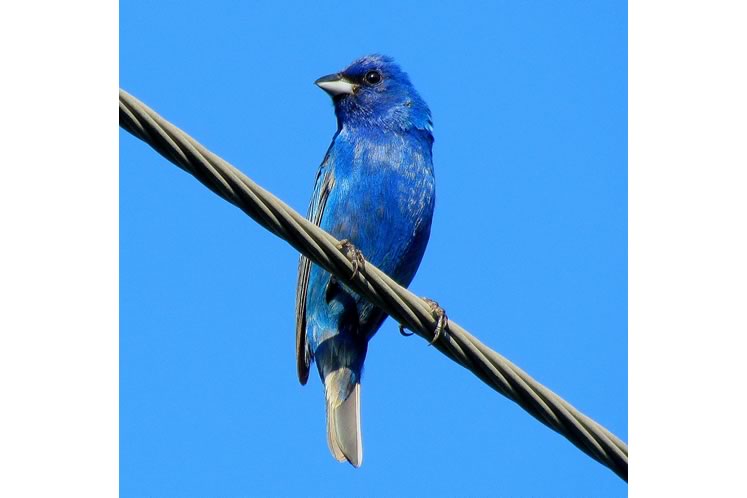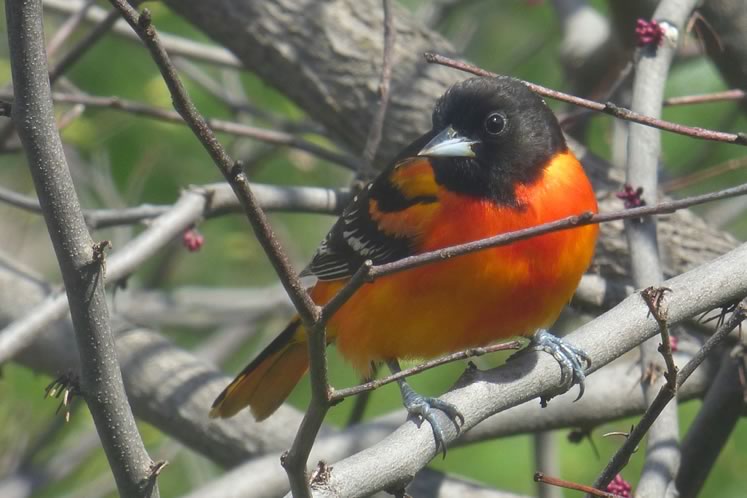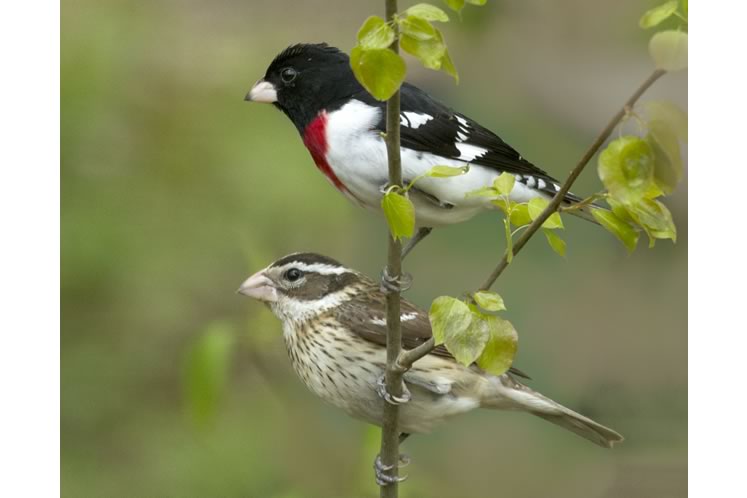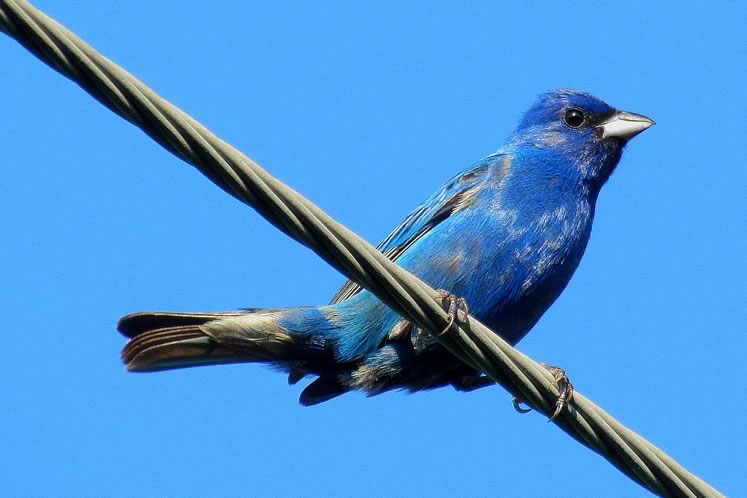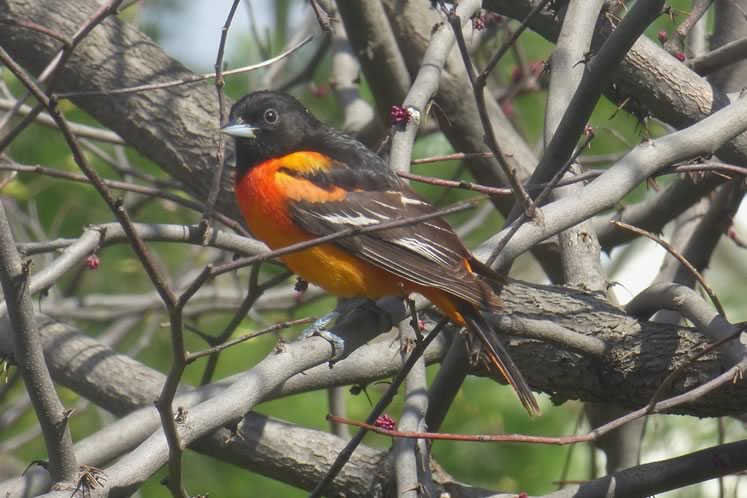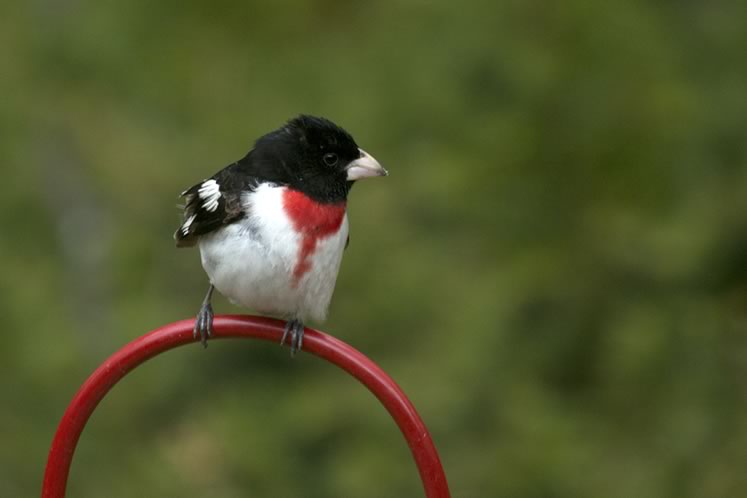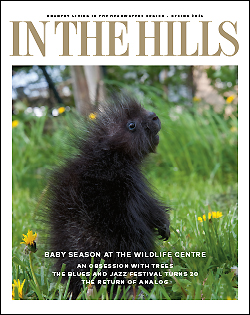Spring Songbirds
May and June herald the arrival of a trio of supremely beautiful tropical migrants: indigo buntings, Baltimore orioles and rose-breasted grosbeaks.
On May mornings I wake to exuberant birdsong in my greening yard. I listen to the familiar warble of the robins, the chatter of wrens and the coo, coo, coo of mourning doves. But I wait, fingers crossed, for different melodies and different notes that herald the arrival of a trio of supremely beautiful tropical migrants: indigo buntings, Baltimore orioles and rose-breasted grosbeaks.
Offerings of sunflower seed and sugar water usually lure them in. Baltimore orioles announce their arrival with whistled notes of sparkling clarity. The males are pumpkin orange, trimmed with black. With brush-tipped tongues they slurp sugar water, a suitable stand-in for nectar supped from tropical flowers on their winter ranges.
Famed ornithologist Roger Tory Peterson described the rose-breasted grosbeak’s song as like a robin’s but “mellower, given with more feeling, as if a robin has taken voice lessons.” Hearing this refined “robin” voice in my yard quickens my step, for the singer is a truly glorious sight. A male rose-breasted grosbeak is a dapper black and white bird with a striking red “bib.”
Another tropical visitor to my yard in the spring is the indigo bunting. Like the rose-breasted grosbeak, this thick-billed finch cracks sunflower seeds with gusto.
And like the grosbeaks and the orioles, buntings are arresting creatures. In sunlight the males are a striking azure blue – despite a complete lack of blue pigment. The brilliance stems from an interplay between sunlight and the structure of the buntings’ feathers.
In their tropical haunts, these beautiful migrants share habitat with many other spectacular birds. Most are homebodies, content to remain in Guatemala, Panama or other neotropical locales. They sport exotic names like elegant trogon, emerald toucanet, yellow-throated euphonia, blue-crowned motmot and white-collared manikin.
None of these lovely birds will ever grace my backyard feeders. But the tropical colour of grosbeaks, orioles and buntings is compensation enough.
Related Stories
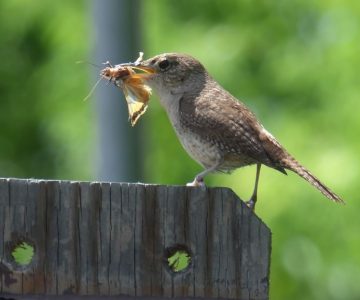
Birdsong – Brought to You by Bugs
Jul 4, 2018 | | Notes from the WildI recently had the pleasure of watching a pair of house wren parents feed their babies in a backyard nest box.
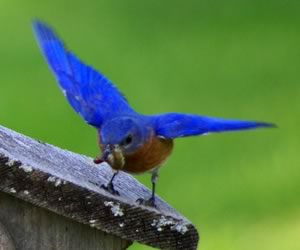
Bluebirds
Jun 5, 2017 | | Notes from the WildThe success of bluebird nest boxes tells us that we can help wildlife, if we care enough and have the will.
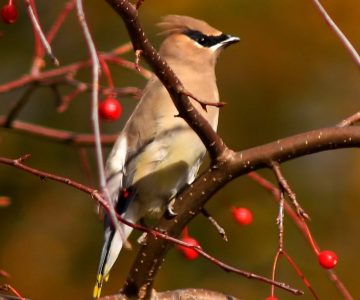
Cedar Waxwings
Dec 12, 2011 | | Notes from the WildA lovely shrub that waxwings find irresistible in late fall and early winter is a native holly called “winterberry”.
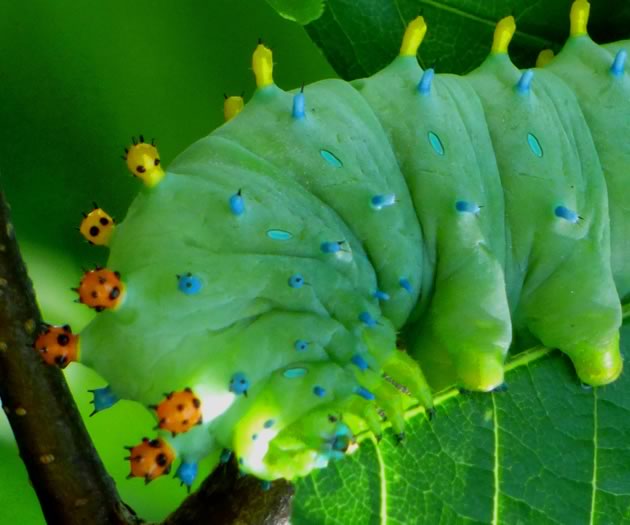
Trees for Birds
Mar 29, 2017 | | Notes from the WildIf you love birds, and you plant trees or shrubs this spring, please choose native plants.

